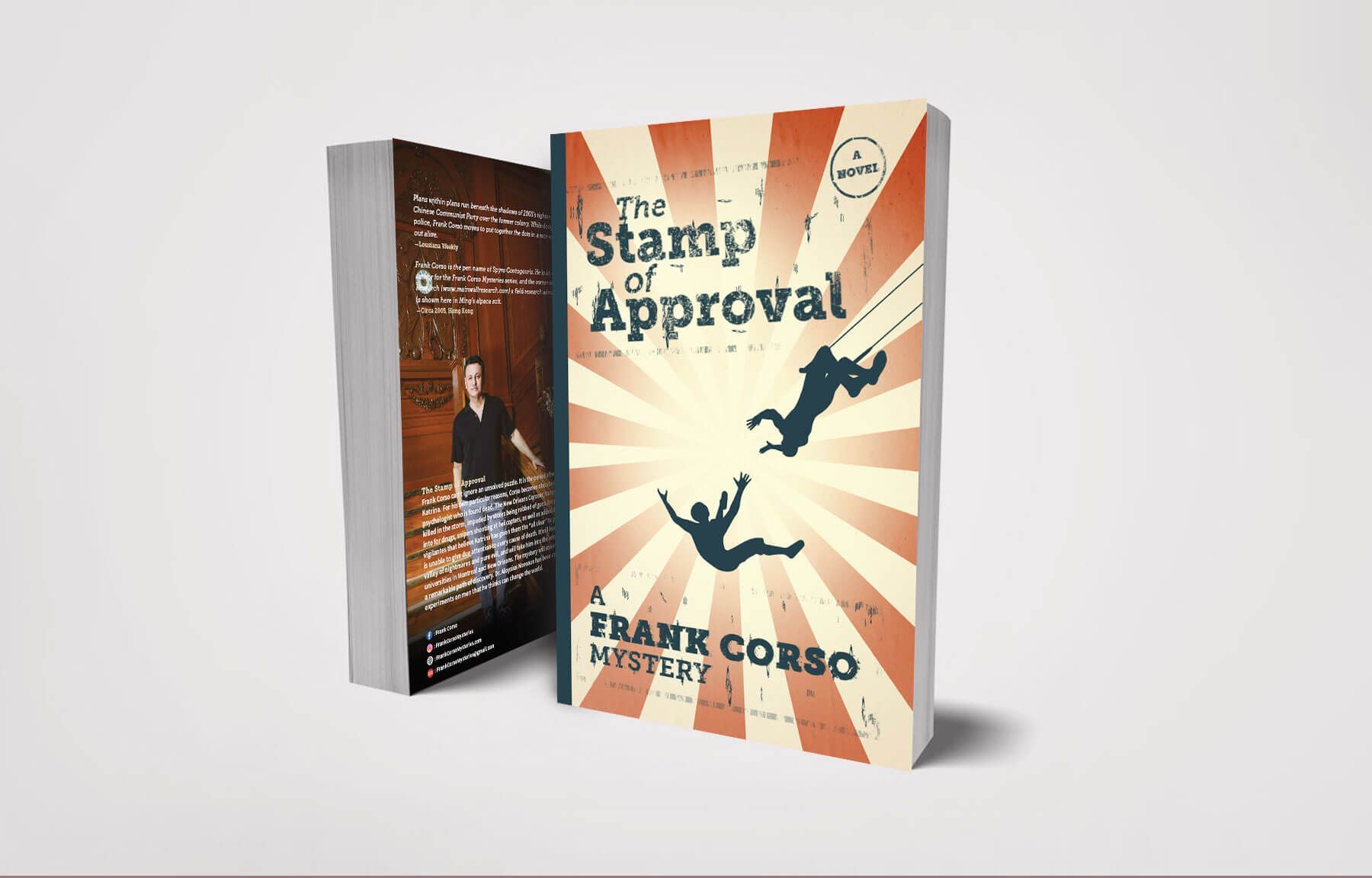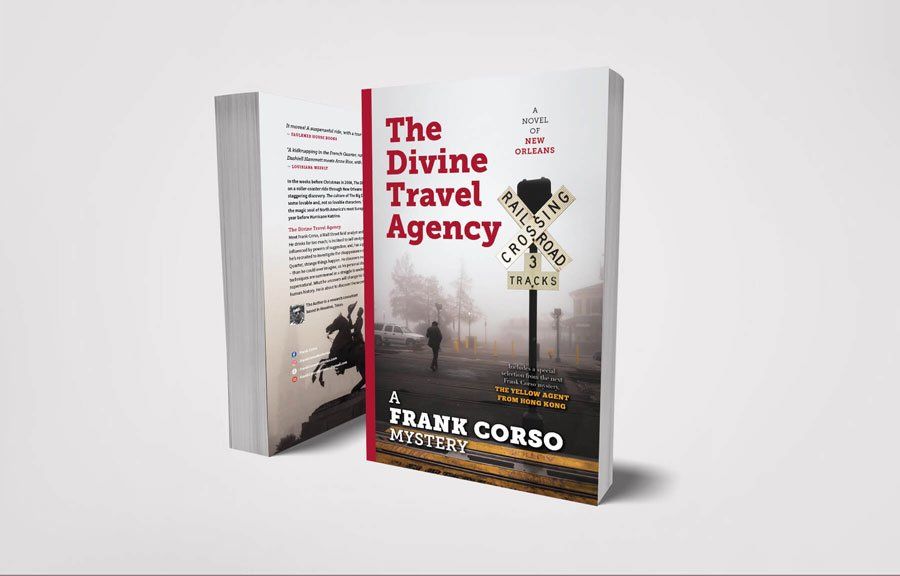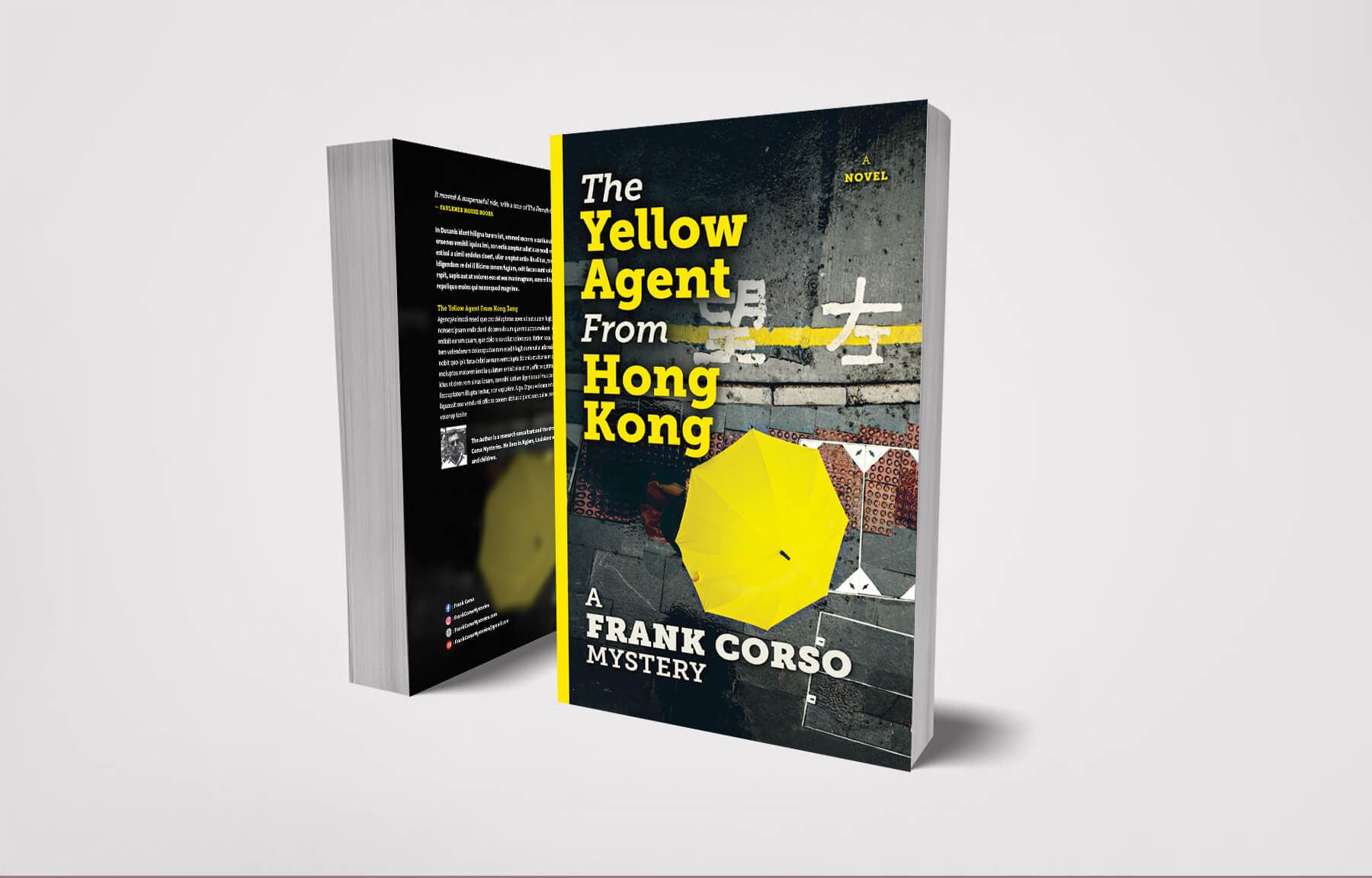Hurricane Katrina | Satellite View
Monday 29th August, 2005 (6:10am CST)

The Stamp of Approval
A novel of New Orleans after Hurricane Katrina
Katrina was initially a tropical depression that formed in the Lesser Antilles; and it strengthened as it became better organized over the southeastern Bahamas as its path moved towards the southern tip of Florida. It continued to gain momentum, and just two hours before its path made landfall in Broward County, it was just a low Category hurricane. The storm weakened over land, and then crossed into the warm waters of the Gulf of Mexico. In the open waters of the Gulf, it reached a Category 3 on the Saffir-Simpson wind scale. An eyewall replacement cycle disrupted the intensification, but caused the storm to nearly double in size. The ocean current, which transports warm water from the Caribbean Sea northward to the Gulf, was unusually warm, beginning in June, in the summer of 2005. On August 19th, 20th, and 21st, the temperature in Southern Louisiana was a sustained 95-96 degrees from about 10:00am until the early evening hours. By comparison, the highest temperature ever recorded in New Orleans in August, was 102 degrees in 1980 on the 22nd of that month. The combination caused what several meteorologists’ called, “The eight-hundred pound gorilla.”
The quickening of the storm meteorologists’ called, ‘accumulated cyclone energy’. Indeed, the summer of 2005 was a record breaking hurricane season with three of the top ten most intense hurricanes. Katrina, Rita, and Wilma, in terms of barometric pressure, were some of the lowest ever recorded. In the days following the storm, I learned the lower the barometric pressure, the greater the wind speed and cyclone energy. Katrina, Rita, and Wilma, had sustained winds of as much as 175, 180, and 185 miles per hour, respectively. Hurricane Katrina caused $125 billion in damage to New Orleans and South Louisiana, and over 1,800 citizens lost their lives. The City would have fared much better if it were not for the failure of the 17th Street Canal floodwall, which caused the French Quarter and large parts of New Orleans to flood.
Oddly, there was one organization, The Audubon Zoo that had the good fortune to be located on some of the City’s highest ground, and also had a disaster plan that included provisions for hurricanes to sustain its animal population for days. Animal deaths totaled just three (a couple of otters and a raccoon) out of 1,400.
Fourteen zookeepers remained during the storm to care for the animals and, after the storm passed, smartly concluded stripping toppled trees of huge amounts of leaves could be mixed with the stored food provisions. The idea came from the gorillas’ keeper. As it turns out, the Zoo’s most famous resident, and chief attraction, Casey, is a 400-pound male Silverback, and requires about 60-pounds of leaves and stems per day in addition to bananas. Indeed, as one thing leads to another, and as necessity is the mother of invention, mixing the leaves with the stored food turned out to be essential in maintaining the health of all the animals. In light of the fact that, other than the National Guard, most residents were generally discouraged from returning until September 26th. This was about the time supplies began to flow, but mostly for residents of the West Bank, and Algiers, on the other side of the river, which had not flooded, and where my wife Maggie and I had bought a house near our friend Odysseus Smith and his family. It was the residents on the West Bank that were allowed to return first.
In the days before supplies began to flow, and residents started trickling in, the supply of fallen trees at the Zoo had been picked clean and the stored provisions had been all but exhausted. During that period in late September; Casey, whose habitat has a significant moat around it, in addition to a fence surrounding the moat, was reported by his keeper to have disappeared for several days. His keeper assumed, ‘the Silverback was driven to escape in search of food’. Some days later however, and before the 26th of September, Casey had found his way back to his marshy habitat as it had been restocked with abundant green vegetation and bananas.
—Sources: Wikipedia, and my imagination.
Introduction:
Stamps of Approval
Filing paperwork can be boring and arduous work. Even though technology has made it easier to maintain and file such documents, some things still need a human touch to be valid. Simply printing a document from a laser jet printer is often not enough to certify its authenticity and bona fides. Some documents require a stamp of approval to authenticate their purpose. They require an authorized marking. Without such an authorizing stamp – say – on entry to a foreign country, it might suggest a presence which is unsanctioned. A document requiring a stamp suggests careful consideration was given before authenticating its validity. There are various types of stamped certifications. In ancient times, wax stamps were commonly used by nobility, merchants, and official government entities to protect their most important documents, and to insure that these documents, often delivered by couriers, remained sealed until read by their intended recipients. Many institutions, to this day, still use various forms of stamps to verify their authority over the subject matter – you will find some in this story. Throughout history, stamps have infiltrated many aspects of human endeavor, perhaps because they were commonly used by royalty. Some people often overlook the contribution of such basic tools in everyday life. I believe this is mainly because of the Rubber-stamp (a stamp made of rubber for making imprints); which term, when used as a conjunctive adverbial phrase, actually means ‘it is done without careful consideration for the purpose intended’. Perhaps, this is because the Rubber-stamp is the most frequently used in present day life. There are many types of Rubber-stamps that include, empowered persons who provide approvals without proper consideration.
Rubber-stamps are – for the most part – made of vulcanized rubber. And, as it happens, vulcanized rubber plays an interesting role in this story, and is processed with heat and sulfur additives during production to improve its physical properties. The process known as vulcanization, makes the rubber stronger, as well as more elastic. It’s used in tires and footwear, as well as keypads, gaskets, and countless other products. Vulcanized rubber is unique because, via the curing process, the rubber’s elastomers have been hardened in response to being submerged in a bath of sulfur and other additives, including pigments for color. The rubber is then molded and heated to temperatures of 300 to 400 degrees, after which it is allowed to cool. The end result: the product is significantly stronger, making it the preferred product for its durability. Exposure to heat and sulfur creates new cross-links in the rubber which, ultimately, makes the rubber stronger and more elastic. How did I learn all of this? In the days following my return to New Orleans after Hurricane Katrina, my friend, Detective Odysseus Smith, invited an unauthorized person, me, to inspect a headless dead body in a swimming pool in The Garden District of New Orleans.
Apart from authorizing paperwork, there are many other purposes for stamps. Then there are postage stamps (in Italian: Francobollo), which is where this story begins. On the 27th of August, before Hurricane Katrina, I flew back, through New York, from a field trip to visit a company I was researching headquartered in Madrid, but whose subsidiary’s shares were trading on the NASDAQ. The Company was in the business of selling rare collectible postage stamps.
Excerpt...
Interlude
A piercing pain gripped his stomach as he sat up in bed. He moved to his chair and, after a minute, walked to the bathroom. Looking at himself in the mirror, his reflection made him sick. So much so, he threw up in the sink and some vomit splashed on his night shirt. As was his custom when this happened, and it was happening more frequently of late, he stripped naked, ran the shower, and stepped inside with the night shirt in hand. He was a fastidious man, both meticulous and scornful, and could not go back to bed knowing the night shirt had not been rinsed of bile from his stomach. He had to see a real doctor about this condition and stop self-medicating. After wringing the water from the shirt, he threw it in the hamper next to the shower and continued to wash himself. Some five to ten minutes passed in brushing his teeth and putting on his robe. He took note of the time on his waterproof watch: 8:20pm, past his usual bedtime of 8:00pm. He went downstairs to the kitchen to make a fresh nighttime tea. Back in the bedroom, he retrieved fresh pajamas from the closet, took a few sips of tea and went back to bed.
A dream came to him, and he found himself going down the stairs and outside. He saw black water and felt compelled to sit down in it. His neck began to ache, as if in a noose. He tried to wake up but couldn't. Strong hands were yanking on his neck. He couldn't wake up. Why? The piercing pain in his stomach was back and he moaned. Suddenly, he felt a ghost of himself leave his body and rise, hovering over the water and looking down at his corpse. For a moment he felt frozen, as if in some kind of cryonic freeze trial where the dead body is preserved to remain stable until medical technology catches up. In that second of thought, he imagined the reversal of the aging process. Then he felt a freezing vapor moving through his veins, and fear overtook his every thought. At which point, his ghost body began to dismantle itself in parts, and rise into the ether. A soothing calm followed as his head, separated now from the other body parts, looked back at what he assumed was his dead physical body getting smaller and smaller. He had died in his dream, and again he tried to wake up. As he rose into the night, the shining stars shimmered as he floated and floated, higher and higher, into space. The darkness commenced to fade the sparkle of stars slowly…and then, everything turned black.
OTHER Frank Corso Mysteries
The Yellow Agent from Hong Kong
Title or short description



